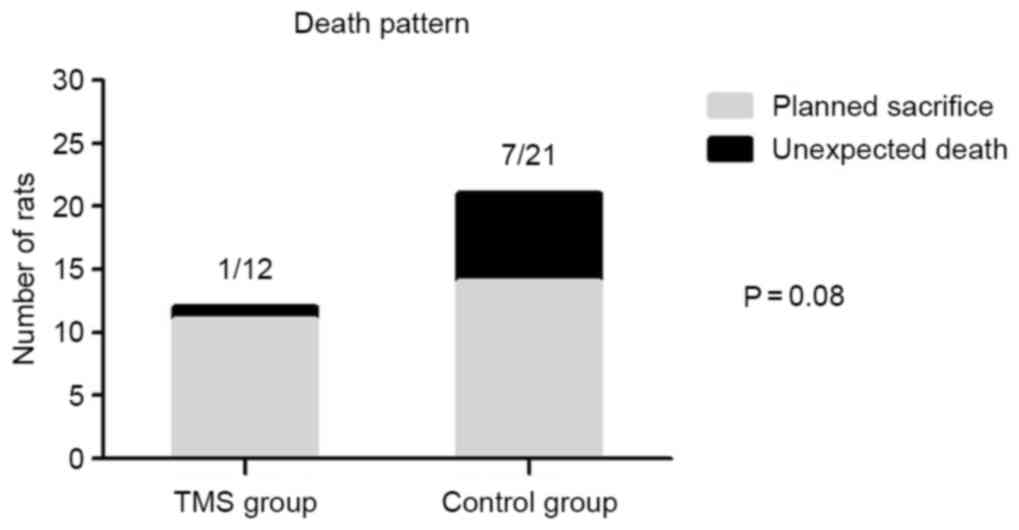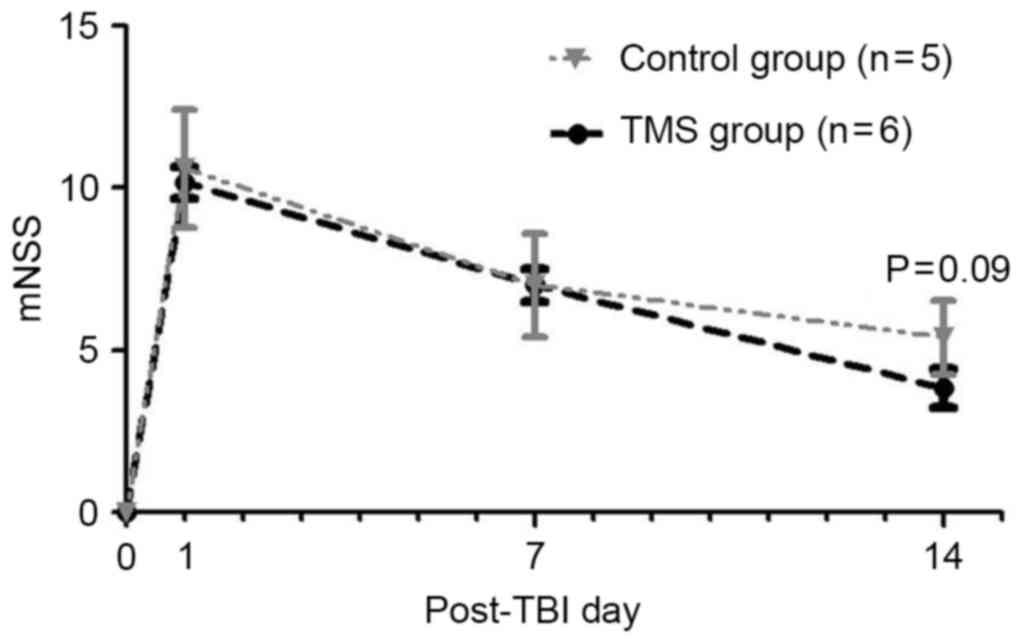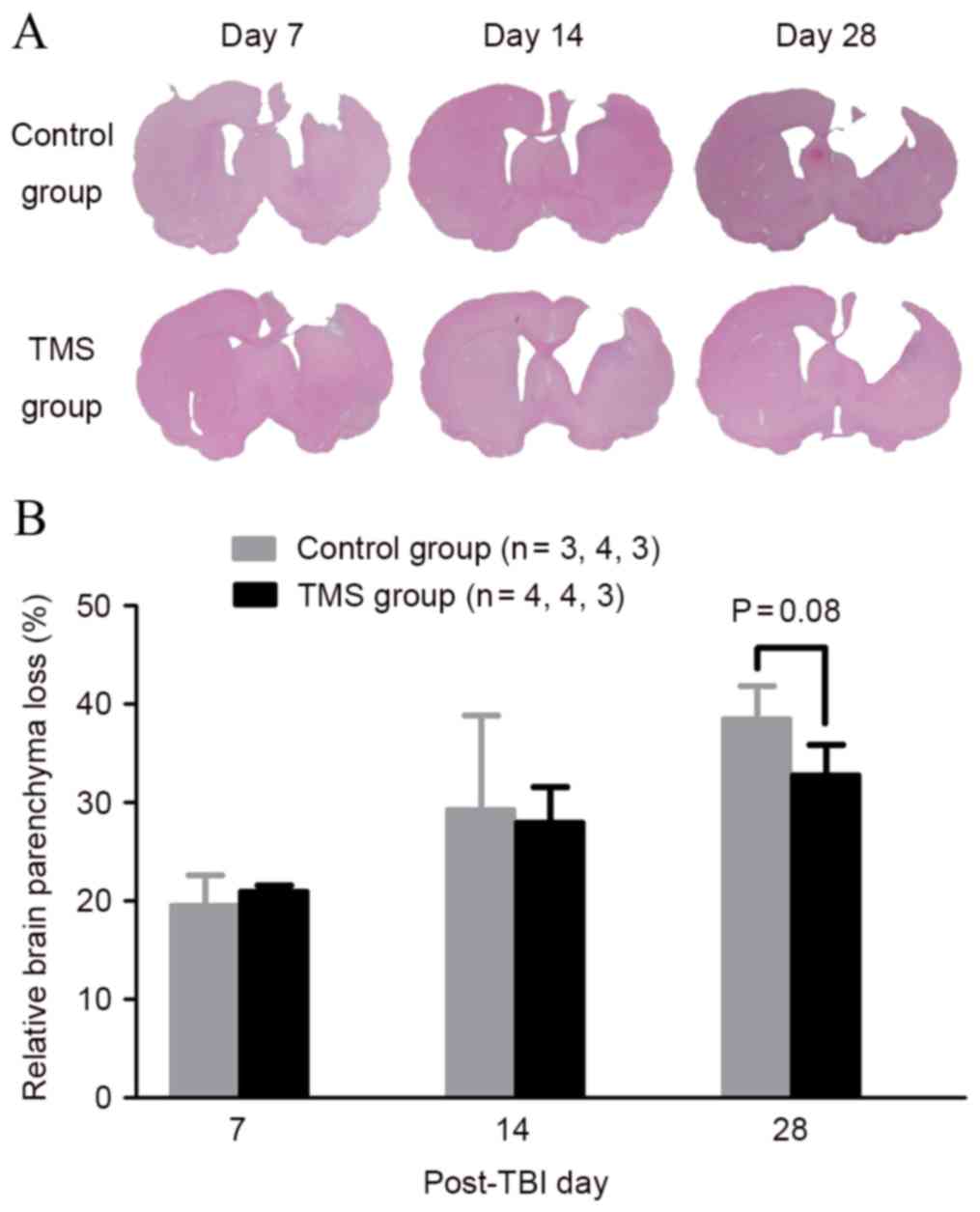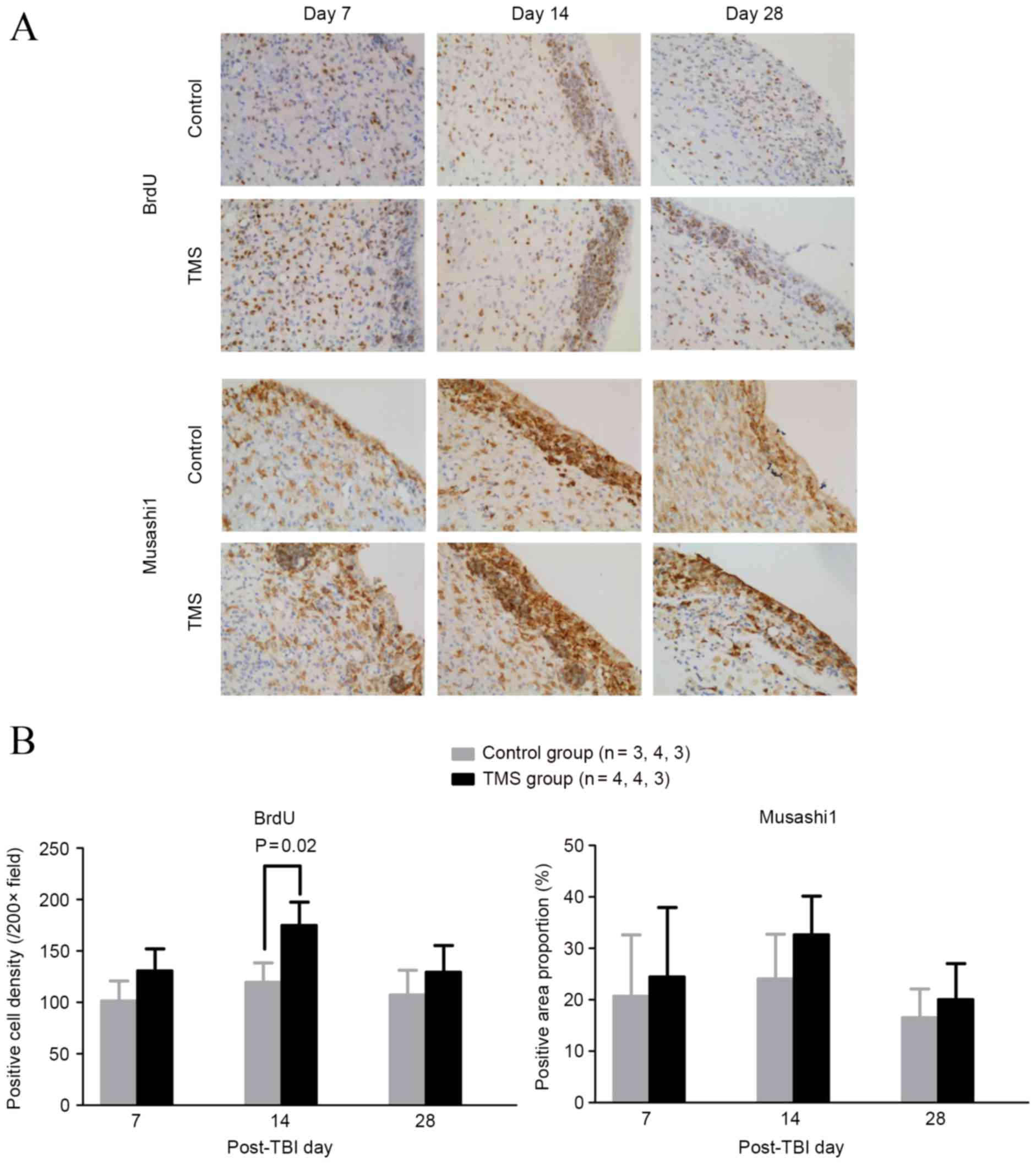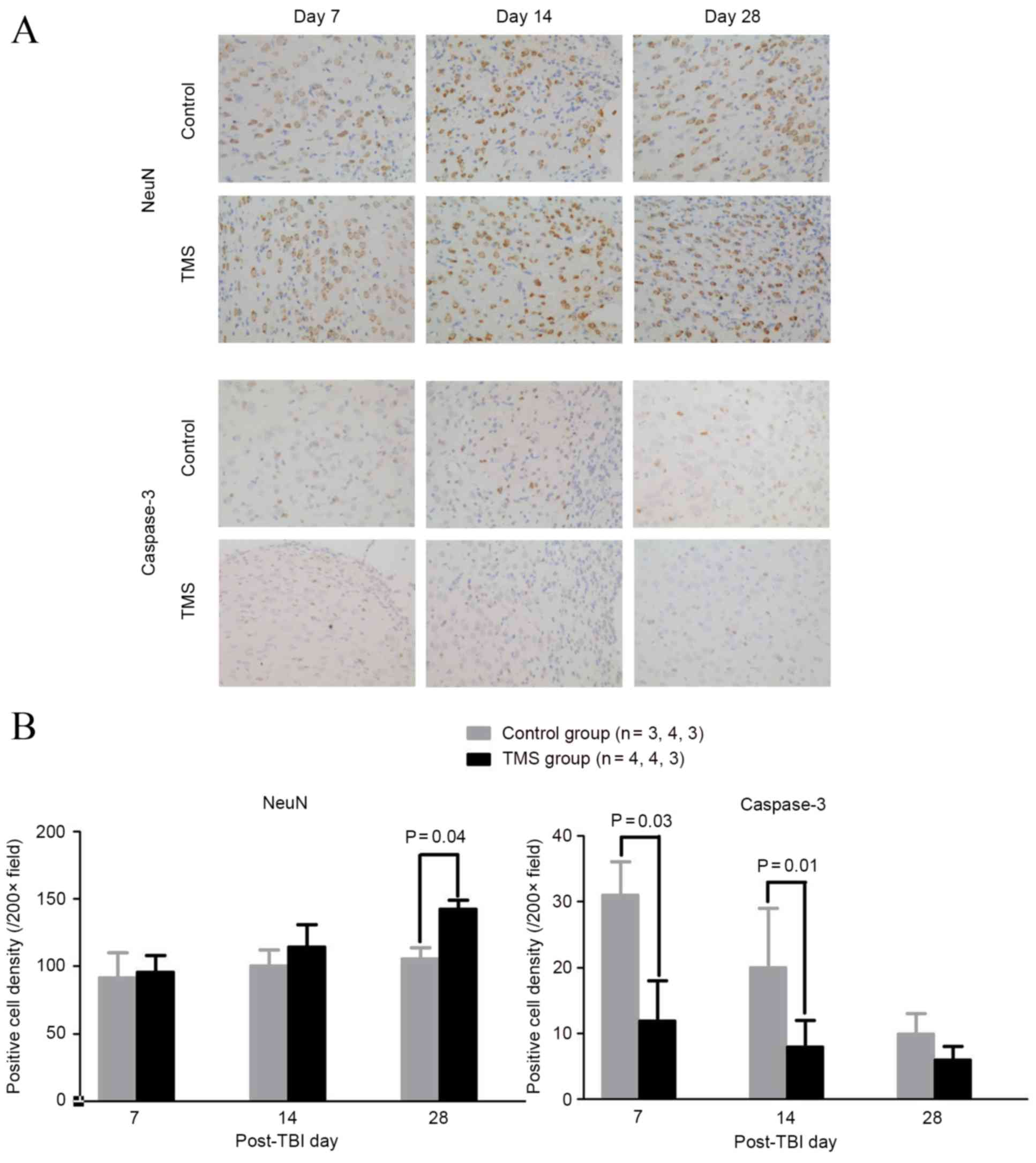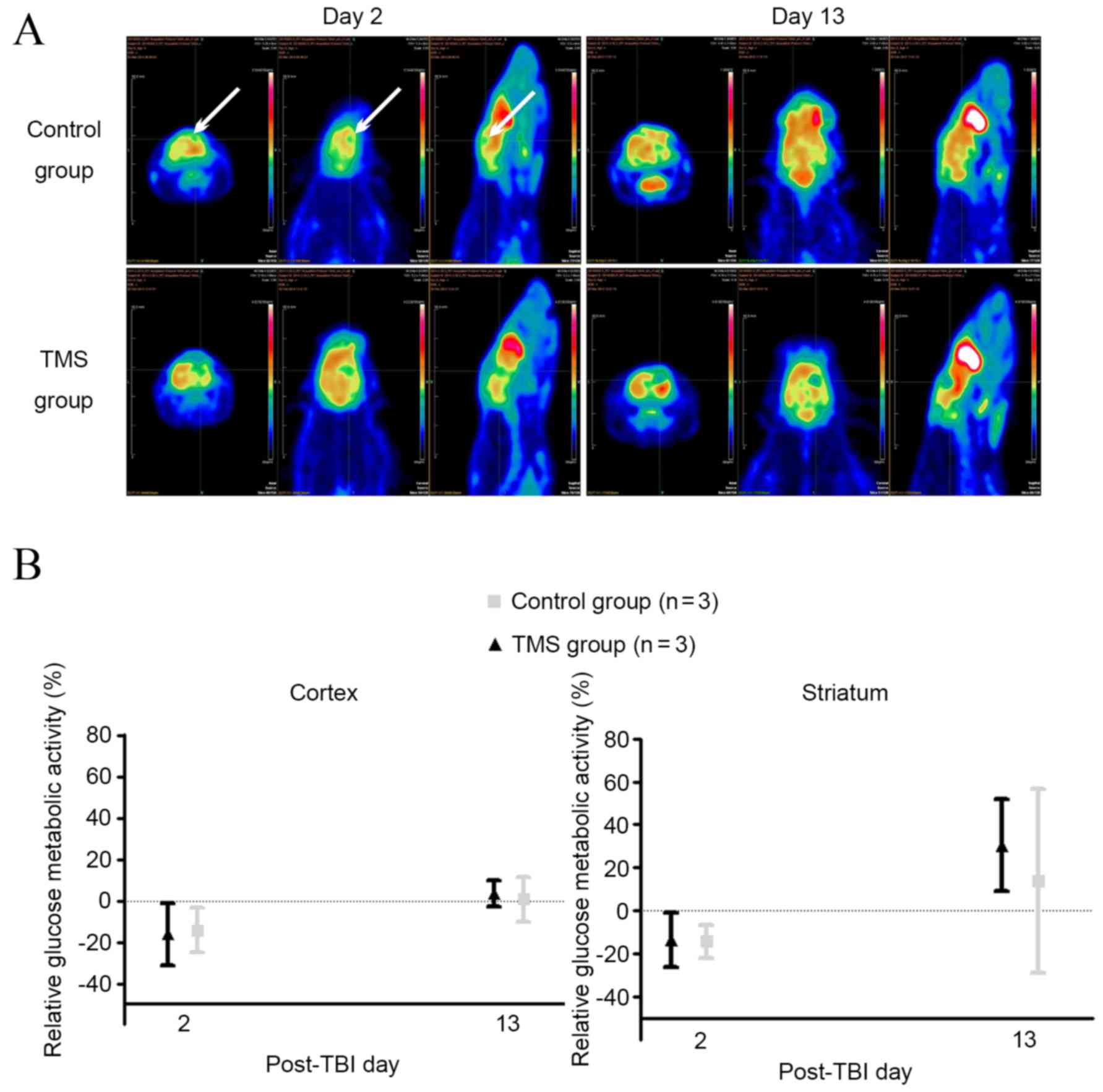|
1
|
Algattas H and Huang JH: Traumatic brain
injury pathophysiology, and treatments: Early, intermediate, and
late phases post-injury. Int J Mol Sci. 15:309–341. 2014.
View Article : Google Scholar
|
|
2
|
Faul M, Xu L, Wald MM and Coronado VG:
Traumatic Brain Injury in the United States: Emergency Department
Visits, Hospitalizations, and Deaths. Centers for Disease Control
and Prevention, National Center for Injury Prevention and Control;
Atlanta, GA, USA: 2010
|
|
3
|
Sosin DM, Sacks JJ and Smith SM: Head
injury-associated deaths in the United States from 1979 to 1986.
JAMA. 262:2251–2255. 1989. View Article : Google Scholar : PubMed/NCBI
|
|
4
|
Wu X, Hu J, Zhuo L, Fu C, Hui G, Wang Y,
Yang W, Teng L, Lu S and Xu G: Epidemiology of traumatic brain
injury in eastern China, 2004: A prospective large case study. J
Trauma. 64:1313–1319. 2008. View Article : Google Scholar : PubMed/NCBI
|
|
5
|
Villamar MF, Portilla A Santos, Fregni F
and Zafonte R: Noninvasive brain stimulation to modulate
neuroplasticity in traumatic brain injury. Neuromodulation.
15:326–338. 2012. View Article : Google Scholar : PubMed/NCBI
|
|
6
|
Demirtas-Tatlidede A, Vahabzadeh-Hagh AM,
Bernabeu M, Tormos JM and Pascual-Leone A: Noninvasive brain
stimulation in traumatic brain injury. J Head Trauma Rehabil.
27:274–292. 2012. View Article : Google Scholar : PubMed/NCBI
|
|
7
|
Dayan E, Censor N, Buch ER, Sandrini M and
Cohen LG: Noninvasive brain stimulation: From physiology to network
dynamics and back. Nat Neurosci. 16:838–844. 2013. View Article : Google Scholar : PubMed/NCBI
|
|
8
|
Barker AT, Jalinous R and Freeston IL:
Non-invasive magnetic stimulation of human motor cortex. Lancet.
1:1106–1107. 1985. View Article : Google Scholar : PubMed/NCBI
|
|
9
|
Chen R, Classen J, Gerloff C, Celnik P,
Wassermann EM, Hallett M and Cohen LG: Depression of motor cortex
excitability by low-frequency transcranial magnetic stimulation.
Neurology. 48:1398–1403. 1997. View Article : Google Scholar : PubMed/NCBI
|
|
10
|
Pascual-Leone A, Valls-Solé J, Wassermann
EM and Hallett M: Responses to rapid-rate transcranial magnetic
stimulation of the human motor cortex. Brain. 117:847–858. 1994.
View Article : Google Scholar : PubMed/NCBI
|
|
11
|
Orosz A, Jann K, Wirth M, Wiest R, Dierks
T and Federspiel A: Theta burst TMS increases cerebral blood flow
in the primary motor cortex during motor performance as assessed by
arterial spin labeling (ASL). Neuroimage. 61:599–605. 2012.
View Article : Google Scholar : PubMed/NCBI
|
|
12
|
Cho SS, Pellecchia G, Ko JH, Ray N, Obeso
I, Houle S and Strafella AP: Effect of continuous theta burst
stimulation of the right dorsolateral prefrontal cortex on cerebral
blood flow changes during decision making. Brain Stimul. 5:116–123.
2012. View Article : Google Scholar : PubMed/NCBI
|
|
13
|
Kito S, Fujita K and Koga Y: Regional
cerebral blood flow changes after low-frequency transcranial
magnetic stimulation of the right dorsolateral prefrontal cortex in
treatment-resistant depression. Neuropsychobiology. 58:29–36. 2008.
View Article : Google Scholar : PubMed/NCBI
|
|
14
|
Speer AM, Kimbrell TA, Wassermann EMD,
Repella J, Willis MW, Herscovitch P and Post RM: Opposite effects
of high and low frequency rTMS on regional brain activity in
depressed patients. Biol Psychiatry. 48:1133–1141. 2000. View Article : Google Scholar : PubMed/NCBI
|
|
15
|
Gersner R, Kravetz E, Feil J, Pell G and
Zangen A: Long-term effects of repetitive transcranial magnetic
stimulation on markers for neuroplasticity: Differential outcomes
in anesthetized and awake animals. J Neurosci. 31:7521–7526. 2011.
View Article : Google Scholar : PubMed/NCBI
|
|
16
|
Feeney DM, Boyeson MG, Linn RT, Murray HM
and Dail WG: Responses to cortical injury: I. Methodology and local
effects of contusions in the rat. Brain Res. 211:67–77. 1981.
View Article : Google Scholar : PubMed/NCBI
|
|
17
|
Gao Y, Sun JZ, Tian ZX and Wu GY: An
improved weight-dropping model of traumatic brain injury in rats.
Zhe Jiang Chuang Shang Wai Ke Bian Ji Bu. 9:283–285. 2004.(In
Chinese).
|
|
18
|
Schallert T, Kozlowski DA, Humm JL and
Cocke RR: Use-dependent structural events in recovery of function.
Adv Neurol. 73:229–238. 1997.PubMed/NCBI
|
|
19
|
Yue L, Xiao-lin H and Tao S: The effects
of chronic repetitive transcranial magnetic stimulation on
glutamate and gamma-aminobutyric acid in rat brain. Brain Res.
1260:94–99. 2009. View Article : Google Scholar : PubMed/NCBI
|
|
20
|
Wang HY, Crupi D, Liu J, Stucky A,
Cruciata G, Di Rocco A, Friedman E, Quartarone A and Ghilardi MF:
Repetitive transcranial magnetic stimulation enhances BDNF-TrkB
signaling in both brain and lymphocyte. J Neurosci. 31:11044–11054.
2011. View Article : Google Scholar : PubMed/NCBI
|
|
21
|
Taguchi A, Soma T, Tanaka H, Kanda T,
Nishimura H, Yoshikawa H, Tsukamoto Y, Iso H, Fujimori Y, Stern DM,
et al: Administration of CD34+ cells after stroke enhances
neurogenesis via angiogenesis in a mouse model. J Clin Invest.
114:330–338. 2004. View Article : Google Scholar : PubMed/NCBI
|
|
22
|
Guan J, Tong W, Ding W, Du S, Xiao Z, Han
Q, Zhu Z, Bao X, Shi X, Wu C, et al: Neuronal regeneration and
protection by collagen-binding BDNF in the rat middle cerebral
artery occlusion model. Biomaterials. 33:1386–1395. 2012.
View Article : Google Scholar : PubMed/NCBI
|
|
23
|
Constantinescu CC and Mukherjee J:
Performance evaluation of an Inveon PET preclinical scanner. Phys
Med Biol. 54:2885–2899. 2009. View Article : Google Scholar : PubMed/NCBI
|
|
24
|
Visnyei K, Tatsukawa KJ, Erickson RI,
Simonian S, Oknaian N, Carmichael ST and Kornblum HI: Neural
progenitor implantation restores metabolic deficits in the brain
following striatal quinolinic acid lesion. Exp Neurol. 197:465–474.
2006. View Article : Google Scholar : PubMed/NCBI
|
|
25
|
Hirata T, Keto Y, Nakata M, Takeuchi A,
Funatsu T, Akuzawa S, Sasamata M and Miyata K: Effects of serotonin
5-HT3 receptor antagonists on stress-induced colonic hyperalgesia
and diarrhoea in rats: A comparative study with opioid receptor
agonists, a muscarinic receptor antagonist and a synthetic polymer.
Neurogastroenterol Motil. 20:557–565. 2008. View Article : Google Scholar : PubMed/NCBI
|
|
26
|
Túnez I, Montilla P, del Carmen Muñoz M,
Medina FJ and Drucker-Colín R: Effect of transcranial magnetic
stimulation on oxidative stress induced by 3-nitropropionic acid in
cortical synaptosomes. Neurosci Res. 56:91–95. 2006. View Article : Google Scholar : PubMed/NCBI
|
|
27
|
Tasset I, Drucker-Colin R, Peña J, Jimena
I, Montilla P, Medina FJ and Túnez I: Antioxidant-like effects and
protective action of transcranial magnetic stimulation in
depression caused by olfactory bulbectomy. Neurochem Res.
35:1182–1187. 2010. View Article : Google Scholar : PubMed/NCBI
|
|
28
|
Tasset I, Pérez-Herrera A, Medina FJ,
Arias-Carrión O, Drucker-Colín R and Túnez I: Extremely
low-frequency electromagnetic fields activate the antioxidant
pathway Nrf2 in a Huntington's disease-like rat model. Brain
Stimul. 6:84–86. 2013. View Article : Google Scholar : PubMed/NCBI
|
|
29
|
Teyssier JR, Trojak B, Chauvet-Gelinier JC
and Bonin B: Low frequency transcranial magnetic stimulation
downregulates expression of stress genes in blood leucocytes:
Preliminary evidence. J Psychiatr Res. 47:935–936. 2013. View Article : Google Scholar : PubMed/NCBI
|
|
30
|
Sun W, Fu W, Mao W, Wang D and Wang Y:
Low-frequency repetitive transcranial magnetic stimulation for the
treatment of refractory partial epilepsy. Clin EEG Neurosci.
42:40–44. 2011. View Article : Google Scholar : PubMed/NCBI
|
|
31
|
Sung WH, Wang CP, Chou CL, Chen YC, Chang
YC and Tsai PY: Efficacy of coupling inhibitory and facilitatory
repetitive transcranial magnetic stimulation to enhance motor
recovery in hemiplegic stroke patients. Stroke. 44:1375–1382. 2013.
View Article : Google Scholar : PubMed/NCBI
|
|
32
|
Rodger J and Sherrard RM: Optimising
repetitive transcranial magnetic stimulation for neural circuit
repair following traumatic brain injury. Neural Regen Res.
10:357–359. 2015. View Article : Google Scholar : PubMed/NCBI
|
|
33
|
Yoon YS, Yu KP, Kim H, Kim HI, Kwak SH and
Kim BO: The effect of electric cortical stimulation after focal
traumatic brain injury in rats. Ann Rehabil Med. 36:596–608. 2012.
View Article : Google Scholar : PubMed/NCBI
|
|
34
|
Cuccurazzu B, Leone L, Podda MV,
Piacentini R, Riccardi E, Ripoli C, Azzena GB and Grassi C:
Exposure to extremely low-frequency (50 Hz) electromagnetic fields
enhances adult hippocampal neurogenesis in C57BL/6 mice. Exp
Neurol. 226:173–182. 2010. View Article : Google Scholar : PubMed/NCBI
|
|
35
|
Arias-Carrión O, Verdugo-Díaz L,
Feria-Velasco A, Millán-Aldaco D, Gutiérrez AA, Hernández-Cruz A
and Drucker-Colín R: Neurogenesis in the subventricular zone
following transcranial magnetic field stimulation and nigrostriatal
lesions. J Neurosci Res. 78:16–28. 2004. View Article : Google Scholar : PubMed/NCBI
|
|
36
|
Rueger MA, Keuters MH, Walberer M, Braun
R, Klein R, Sparing R, Fink GR, Graf R and Schroeter M:
Multi-session transcranial direct current stimulation (tDCS)
elicits inflammatory and regenerative processes in the rat brain.
PLoS One. 7:e437762012. View Article : Google Scholar : PubMed/NCBI
|
|
37
|
Bao X, Feng M, Wei J, Han Q, Zhao H, Li G,
Zhu Z, Xing H, An Y, Qin C, et al: Transplantation of Flk-1+ human
bone marrow-derived mesenchymal stem cells promotes angiogenesis
and neurogenesis after cerebral ischemia in rats. Eur J Neurosci.
34:87–98. 2011. View Article : Google Scholar : PubMed/NCBI
|















